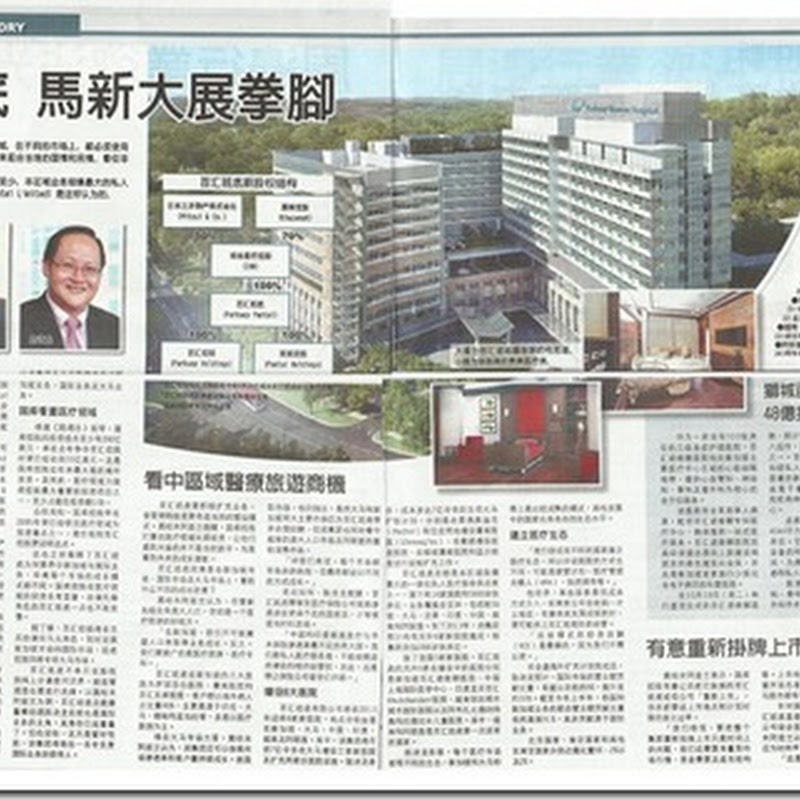By Insider Asia.
- Weak 2QFY11 due to higher costs and one-off factors
- Hit by delays in Fraser campus, Vietnam enrolment
- New campuses, overseas expansion to spur growth
- Earnings downgraded but maintain Buy
HELP’s results for 2QFY Oct 2011 (1 Feb- 30 April 2011) were below expectations due to several one-off factors. Revenue for the quarter rose 1.3% y-o-y to RM31.4 million. However, pre-tax profit was flattish, gaining just 0.5% to RM10.2 million while net profit declined 6.7% to RM6.5 million. For 1HFY2011, revenue rose 2.2% to RM55.7 million, while pre-tax profit increased 3.1% to RM14.3 million and net profit dipped 1.7% to RM9.2 million. This accounted for 40% of our earlier full year net profit forecast of
RM22.8 million.
The relatively weak results in 2QFY2011 were due to several one-off factors locally and overseas, as well as higher personnel costs. On the local front, the shifting of HELP-ICT from the Klang campus to Fraser
Business Park in Kuala Lumpur was delayed from Jan to April, due to handing over delays by the developer.
As such, we understand the company did not undertake enrolment during the January intake period, as it had wanted to market courses at the new and better-located campus.
With the shift to Fraser Business Park now completed, we understand that it has since enrolled 200 new students in May, and this will be reflected in the coming quarters. The shift also increased relocation and renovation costs. Another issue was the Ministry of Higher Education’s directives for education
institutes to streamline their twinning programmes. As a result, HELP’s twinning programmes were transferred from HELP University College to another subsidiary, HELP Academy.
This transitional period had affected the intake of students for twinning programmes, especially the University of East London programmes. Since then, HELP Academy has obtained the approvals to recruit foreign students and for local students to apply for government loans.
We maintain our BUY recommendation, but are revising our FY2011 forecast down by 8.3%.
Much of the issues in Vietnam (due to government regulations) and Fraser Business Park (due to the delay in its campus shifting exercise) have been rectified and will be reflected in the next two quarters, although the company will miss out on half a year’s enrolment in Vietnam.
Fully operational since April, the Fraser Business Park campus on Jalan Sungei Besi in downtown Kuala Lumpur is being occupied by HELP-ICT. HELP is leasing about 220,000 sq ft of space at a preferential rate, which can accommodate up to 5,000 students. The campus will cater largely for postgraduate, technical and vocational courses, and will host a wide range of new courses such as culinary, hospitality, performing arts and physiotherapy, among others.
HELP-ICT has recruited 200 new students in May, bringing its student base to 1,200 with the remaining 1,000 relocated from the Klang campus. The HELP group currently has a total of 12,000 students, with about 10,800 students in Damansara Heights. This excludes students overseas studying for its accredited courses in Vietnam, China and Indonesia.
We understand its degrees in Vietnam have been audited and approved, and the partner, Vietnam National University, should be able to undertake enrolment in 2H2011, after missing out on the first half of the year.
Going forward, cost pressures, especially for personnel expenses, will also continue to rise as HELP prepares to upgrade itself to full University status from University College at present.
Apart from a full-fledged university campus, some of the other requirements include a lower staff-to-student ratio and a higher number of teachers with PhD qualification. These issues, as well as costs associated with its new campus in Subang 2, may dampen earnings growth in the next 1-2 years.
Nonetheless, we continue to like HELP’s strong business model and brand name, which has helped to expand its student population base, extend its presence overseas and increase the appeal of its own degrees.
The increasingly prohibitive cost of overseas degrees, and HELP’s branding and academic standing will continue to increase its student base and ability to increase fees in the future, especially for twinning degrees.
HELP has mapped out a growth strategy for the next few years – both domestically and internationally. HELP aims to grow its domestic student base from around 12,000 at present to 16,000 by 2016. Its domestic expansion will be anchored by two new campuses, in Fraser Business Park and the 23.3-acre Subang 2 campus, the latter will see groundbreaking this month. HELP will also widen its target market by increasing the levels of education and courses – from mainly tertiary to postgraduate, secondary schooling, certificate and vocational courses.
The flagship Subang 2 campus is expected to cost around RM150 million in total, including land cost, with total built-up space of one million sq ft. However, construction will be staggered in phases, with preliminary plans for a first phase of 300,000 sq ft of built-up space.
The international strategy involves expanding HELP’s footprint and branding throughout the region.
HELP is expanding its overseas base further. It is in the process of setting up new affiliations in Indonesia, China, Cambodia, India, the Maldives, UK and Singapore, apart from an education arm in Australia and a venture into online learning.
With these new tie-ups, the company should see significant overseas income from FY2011 onwards, and expects overseas revenue to grow from 10% at present to 50% by 2016.
HELP’s earnings have grown at a double-digit clip since FY2004, with net profit rising from RM5.7 million that year to RM19.1 million in FY10. Following the earnings revision, we now expect net profit to rise 9.3% to RM20.9 million in FY11 and 15% to RM24 million in FY12, with EPS of 14.7 sen and 16.9 sen, respectively.
At the current price of RM2.59, they are trading at 17.6 times FY11 and 15.3 times FY12 earnings. While the stock appears fairly valued for now, we continue to like its longer-term growth prospects and strategy, strong branding and defensive qualities.





















































